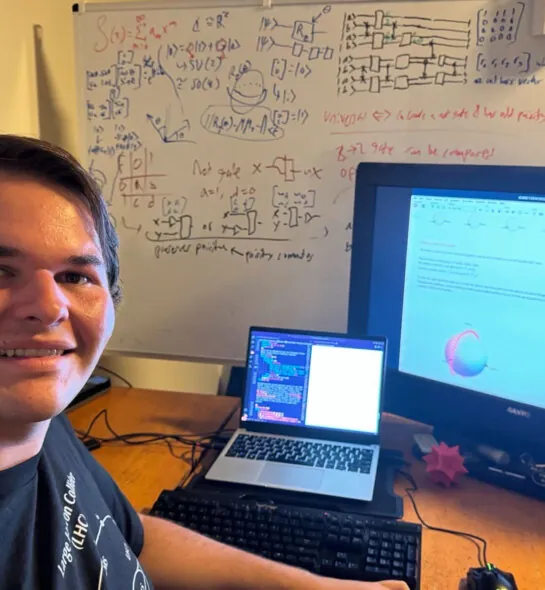Deeper Dive
Combining my interest in computational physics, using programming and simulations to solve problems in physics, I programmed my own simulator and discovered the smallest known set of two-qubit gates capable of performing any computation on a quantum computer. Quantum computers leverage properties of quantum physics, such as superposition and entanglement, to solve problems exponentially faster than classical computers. The small-scale operations performed by a computer are called logic gates, and a set of logic gates is considered universal if it can solve any computable problem. Currently, one of the biggest challenges in practical quantum computing is the large amount of error introduced by gates. Using fewer types of gates may simplify quantum computer design and reduce error.
Once quantum computing reaches commercial viability and begins to improve exponentially, it has the potential to solve some of the world’s greatest challenges. For example, it could help develop an alternative to the Haber-Bosch process, which accounts for 3% of the world’s carbon emissions. This industrial process breaks apart nitrogen to make ammonia for fertilizer at extremely high heat and pressure. In contrast, bacteria on the roots of certain plants use an enzyme called nitrogenase to split nitrogen without high heat or pressure — but the molecule is too large and complex for classical simulation. A sufficiently large quantum computer could easily model such a system, enabling sustainable alternatives to Haber-Bosch. Beyond this, quantum computing could drive breakthroughs in drug discovery, artificial intelligence, and other fields.



